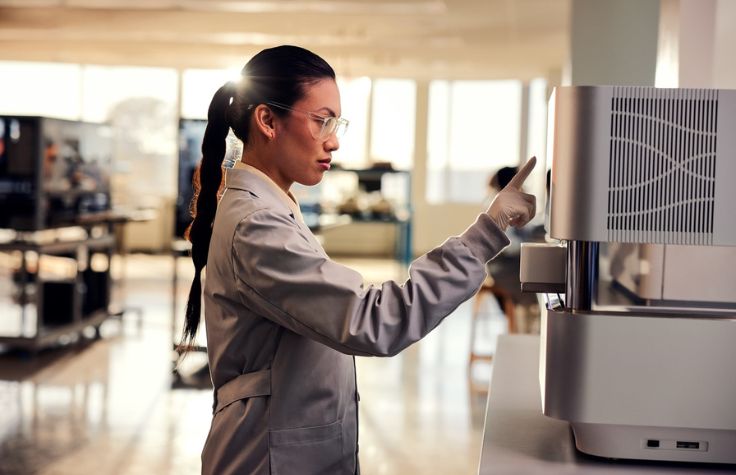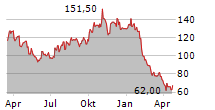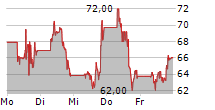
NORTHAMPTON, MA / ACCESSWIRE / April 5, 2024 / Illumina
The adoption of WGS in precision oncology is on the rise. Plus: the promise of MRD
Originally published on Illumina News Center
Whole-genome sequencing (WGS) use is more established for rare and pediatric disease, but next-generation sequencing in clinical use for cancer consists of various approaches. In the last two decades since a targeted therapy was first approved for the EGFR mutation, comprehensive genomic profiling, or CGP, has become a gold standard for genomic assessment of cancer. CGP is a single next-generation sequencing assay that assesses hundreds of genes, including relevant cancer biomarkers, for therapy guidance. WGS is a comprehensive method for analyzing entire genomes-human, animal, plant, or disease-related microbes-and its use is restricted to certain cancer types as well as select top-tier academic settings worldwide.
"Prior to therapy selection usage in the 2010s, genomics was, and still is, quite a potent diagnostic, classification, and prognostication tool in cancer," says Illumina Global Medical Director of Oncology Sugganth Daniel Pillei, MD.
Whole-genome sequencing is applicable in specific types of cancer, such as blood cancers, pediatric malignancies, CNS malignancy, and sarcomas. Daniel explains: "In hematologic malignancies, for example, that proportion of diagnostic and prognostic usage remains very high, because the amount of detail that is needed to accurately diagnose, classify, and risk-stratify leukemias is highly dependent on genomics and has become more so with time."
Classifying leukemias, such as acute myeloid leukemias, is more complex in part because blood cancer cells have highly diversified genomic lineages-but accurate classification and risk stratification determine the treatment regimen. "In this context, WGS makes sense," Daniel says, "because you need that broad suite of mutations and variants and genome-wide patterns to make up the picture of what the cancer is, in addition to pinpointing the therapy targets."
After blood cancers, which show the greatest clinical utility so far, pediatric cancers also benefit from the more comprehensive method. The combination of diagnosis, classification, and prognosis required in pediatric cancers dictates the need for whole-genome sequencing.
CGP is a targeted panel that focuses on certain areas of the genome, whereas WGS looks across the board. "Whatever we see in CGP, you're going to see on WGS, and much, much more," Daniel says. In fact, WGS pairs well with information that other testing provides, such as cytogenetics from karyotyping; and gene copy number changes, deletions, and amplifications through fluorescence in situ hybridization (FISH) testing.
Global adoption and programs
In March 2021, a landmark paper from Eric Duncavage, David Spencer, and 25 others at Washington University School of Medicine showed that WGS yielded 25% additional diagnostic information over standard-of-care testing (PCR, karyotyping, FISH-each of which were done in different labs, making the logistics for WGS easier as well; WGS is also more amenable to automation and scalability).
A recent paper in Nature demonstrated the utility of WGS in more than 13,000 tumors from Genomics England's 100,000 Genomes Project. The United Kingdom's National Health Service was the first to approve WGS at a national level, and the country has about seven regional labs that can run WGS. This adoption inspired similar national WGS initiatives in Germany, Sweden, and elsewhere-and the leading institutions in these countries (such as Karolinska Institute, part of Genomic Medicine Sweden, and Munich Leukemia Laboratory) are focusing on rare cancers, leukemias and lymphomas, and pediatric cancers.
In 2023, the United States' National Comprehensive Cancer Network recommended WGS for acute myeloid leukemia (AML), a major step for precision oncology. That same year, Medicare Administrative Contractor MolDX approved reimbursement of WGS for AML.
WGS and the MRD advantage
Daniel came to Illumina to join the Oncology Medical Affairs group, where he focuses on work in molecular residual disease (MRD) testing, ctDNA-based assays, WGS, and other emerging applications in cancer. He coordinates with cross-functional teams to engage and host collaborations in cancer-related diagnostics in the US, Europe, and other regions. He is a board-certified molecular pathologist with extensive experience in establishing and directing molecular oncology and molecular genetics labs in academic institutions and in large reference labs.
MRD testing assesses the potential risk for cancer recurrence and offers a method of detecting cancer relapse before standard modalities such as CT or MRI. It can also be used to assess the effectiveness of a cancer treatment for an individual by defining the state of the molecular disease at any point in time. To tell whether a treatment is working or not requires administering the test on two occasions-for example at the beginning of therapy or mid-regimen and at the completion of the regimen. If a patient's results move from positive to negative after therapy, it not only informs doctors that the treatment was effective, it provides that information much sooner (rather than having to wait two years after therapy has ended for a scan to reveal that the cancer has come back). MRD can also be used for surveillance or longitudinal monitoring in a setting where cancer patients have reached a state of remission and are in long-term follow-up.
The bulk of available MRD data is on risk stratification, which is also its major use case. The technology is in its early stages, and standardization across providers in reporting and quantification is the subject of partnerships in various international consortia.
This year, Illumina announced collaborations with Johnson & Johnson Innovative Medicine and Bristol Myers Squibb to innovate on our MRD research assay, currently under development on a whole-genome backbone. The WGS MRD research assay will detect ctDNA for MRD assessment, allowing researchers to study cancer samples across multiple solid tumor indications. In contrast with existing MRD solutions with complex workflows, Illumina plans to develop a distributable clinical solution that will provide a cost-effective, highly sensitive, and automated workflow, with the potential to achieve a turnaround time of five to seven days.
Collaborations with Roche, Pillar Biosciences, and many other oncology partnerships are helping build Illumina's portfolio of in vitro and companion diagnostics. With so many tests in development, it's paramount that the assays and instruments remain accessible and all-purpose. Illumina technology supports many stages across the cancer continuum and enables its users to provide solutions that aid in the management of cancer patients from research and early discovery to clinical care and beyond. This has been advantageous for large institutions using multiple instruments and platforms across many types of labs. If the technology can transfer between different labs in an organization, the work itself-sometimes under a single investigator-enjoys a smoother pathway. As Daniel puts it, "The availability and use of the same platform and the same technology at different points facilitates better and faster results overall."
Come to our talk at AACR!
At the annual American Association for Cancer Research meeting in San Diego, Illumina is sponsoring a spotlight talk on Sunday, April 7 from 1:30 to 2:30 p.m. The session features speakers working across the continuum from discovery through clinical research: Working on discovery, Dr. Hussein Abbas from MD Anderson Cancer Center will discuss how the Illumina NovaSeq X Series is unlocking massive microenvironment and cell heterogeneity discovery power via single-cell sequencing. In the emerging translational application area, Dr. Aadel Chaudhuri from Mayo Clinic will show data using our RNA Prep with Enrichment kit to sequence cfRNA from blood and urine samples, plus ctDNA and ctDNA methylation data. And finally, from the clinical research arena, Lily Chen, representing the Frederick National Laboratory for Cancer Research, will show results from the multiomic MATCH trial (RNA tissue data combined with ctDNA from blood samples), plus data on new TSO products.

View additional multimedia and more ESG storytelling from Illumina on 3blmedia.com.
Contact Info:
Spokesperson: Illumina
Website: https://www.3blmedia.com/profiles/illumina
Email: info@3blmedia.com
SOURCE: Illumina
View the original press release on accesswire.com




